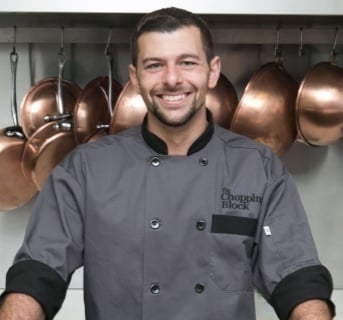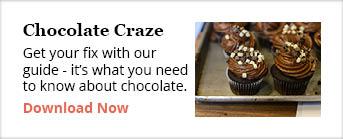The world of hot chocolate is a vast, diverse, fascinating and a bit overwhelming. It’s a beverage that most connect with cold weather and holiday spirit, but please take note, the hot cocoa most of us know today is a sliver of what it once was. The idea of hot chocolate stems from the ancient South American Olmec culture and later, the Mayans and then Aztecs. The drink has morphed and changed during it long journey to us here in the US. It is hardly recognizable from its original state!
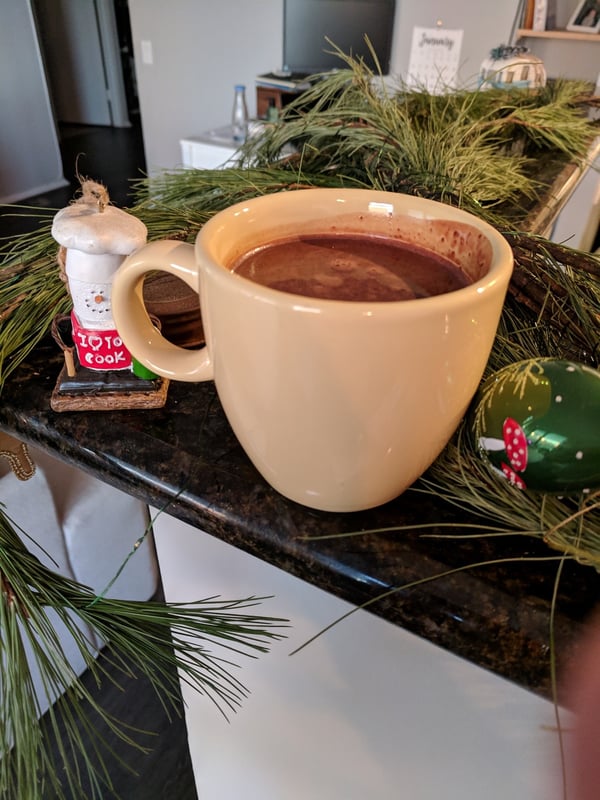
The first records of cocoa, or actually cacao, pop up around 3,000-4,000 years ago with the Olmec where the cultivation of the cacao tree began. The cocoa pods were first dried in the sun and crushed into nibs. These cacao nibs would then be ground into a powder and mixed with water, then poured back and forth in canisters until it developed a frothy texture. Let me clarify, this was a cold, unsweetened and rather grainy beverage that most of our modern pallets would find to be grotesque!
Some may ask, “Why would they drink that?” I would say, sweets were a few thousand years from being a mainstream concept, so the bitter flavor was minimal. Now sit down and ready yourself, this was BEFORE coffee! The Olmec had never truly encountered a concentrated source of caffeine and therefore cacao, containing a solid amount, made them feel like gods. This beverage was called xocolātl and, at first, only enjoyed during religious ceremonies.
The drink remained a large piece of the culture over the years and as the Mayans came into the history books, they inherited the mystic beverage. Over the 2000-ish years, the drink began to develop, individuals adding their favorite spices, chilies, and even maze (corn flour) in some findings. It wasn’t until the Aztecs that it became a delicacy to the wealthy. Montezuma II, Rule of Tenochtitlan, was known to drink it continuously as a show of power and would demand his conquered people to provide him with Cacao as payment - their modern day Scar Face.
It was when the Spanish conquered the Aztecs that they brought the Cacao back to Spain in the 1500s beginning the transformation into the “Hot Cocoa” we know today. At the time, cacao was in low supply, very expensive and the wealthy Spanish upper class had an abundance of sugar. It wasn’t long before it was recognized that sweetening the beverage negated the need for the added spices and maze. The well-kept secret of cacao quickly made its rounds, soon to be not only enjoyed across Europe for its taste, but would become medicinal treatment of many diseases, as well as a nutrient-rich option for military and explorers alike.
To look at the history and the metamorphosis that this simple beverage has taken, to become a commonly powdered winter treat, is fascinatingly elaborate. The way such a diverse genre of drinks came from a simple yet honored beverage, shows that everyone has their own style. My preferred hot chocolate is my Mexican Drinking Chocolate. It’s a very heavy, rich and flavorful drink that can be drank hot, warm, or even mixed with some red wine for a real casual evening. If you find my recipe a bit too tough to manage you can always just stop by The Chopping Block and snag one of our new handmade cocoa mixes that will give you a fantastic cup of Hot Chocolate in just a couple easy steps.
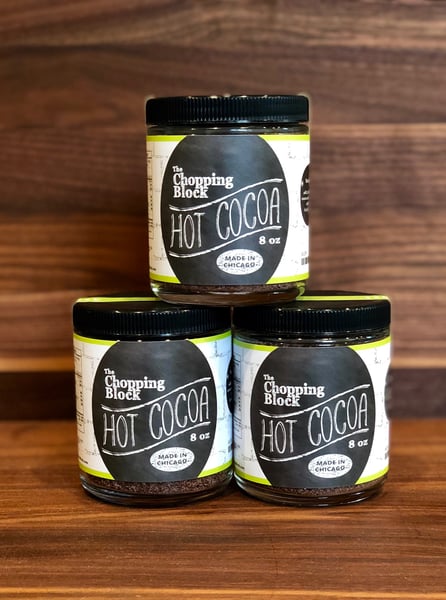
Mexican Drinking Chocolate
5oz dark chocolate
2 cups whole milk
1 teaspoon orange zest
¼ teaspoon ground cinnamon
Pinch of cayenne pepper
Pinch of kosher salt
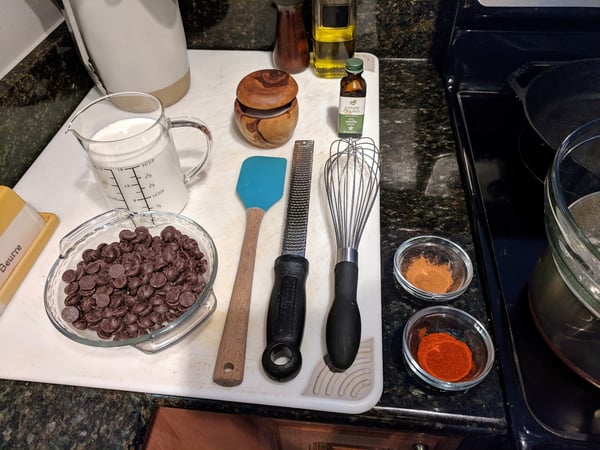
1. Fill a pot halfway with water and bring to a boil.
2. Place a glass or metal bowl on top of the pot allowing the steam to build underneath and warm the bowl gently.
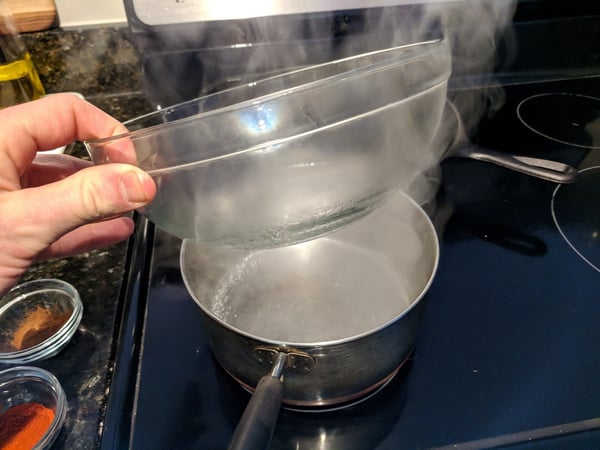
3. Add the chocolate to the bowl and move until it is fully melted and smooth.
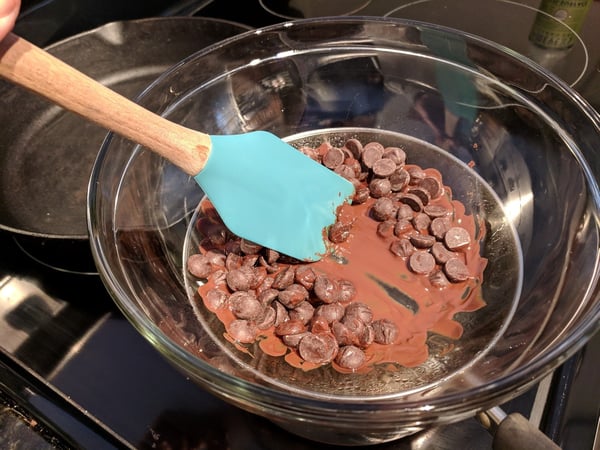
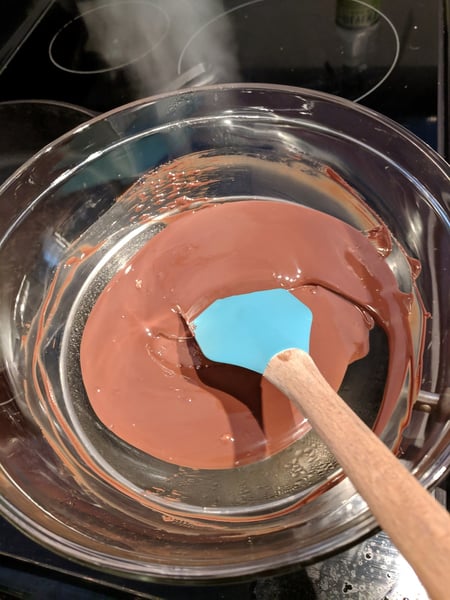
4. Slowly pour in the milk while whisking until it is fully incorporated.
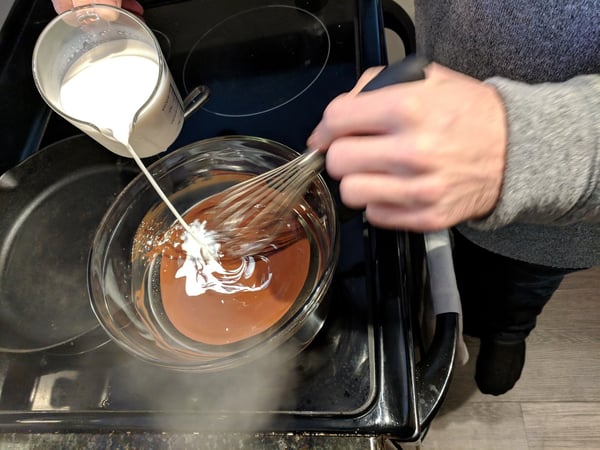
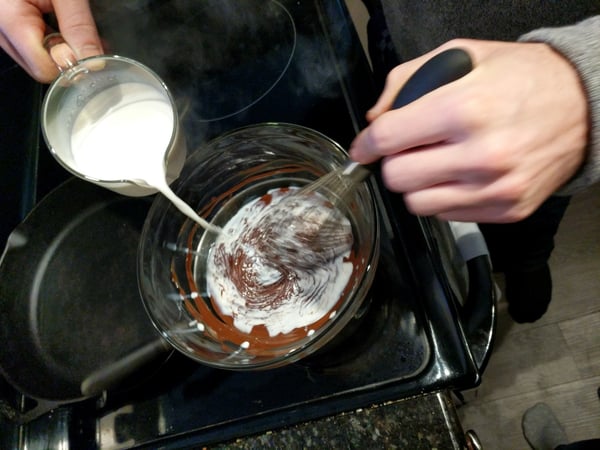
5. Add the remaining ingredients and heat to your desired temperature. Add additional milk if this is too rich.
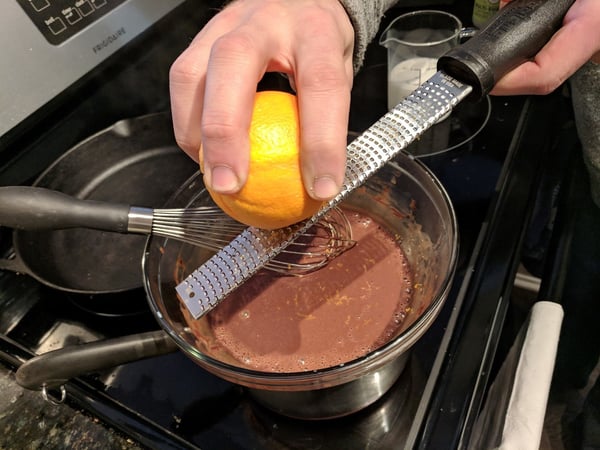
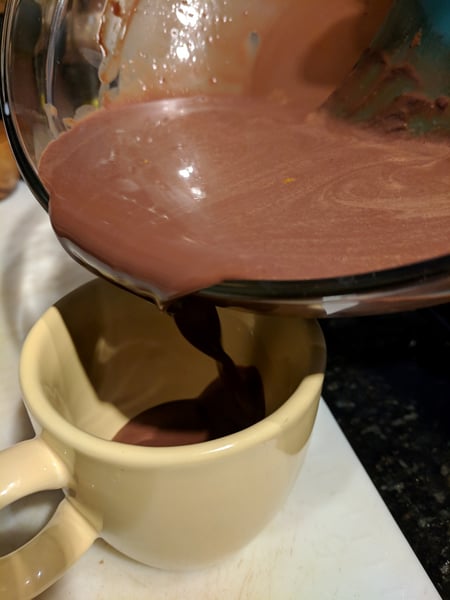
Modifications:
- If you like mocha drinks, simply add coffee or espresso.
- Cool this and add your favorite red wine and create what I call Cocoa Vino!
- For multiple uses, reduce the milk by half and cool the mixture. Then simply heat milk and stir in the base for a quick cup of rich hot chocolate.
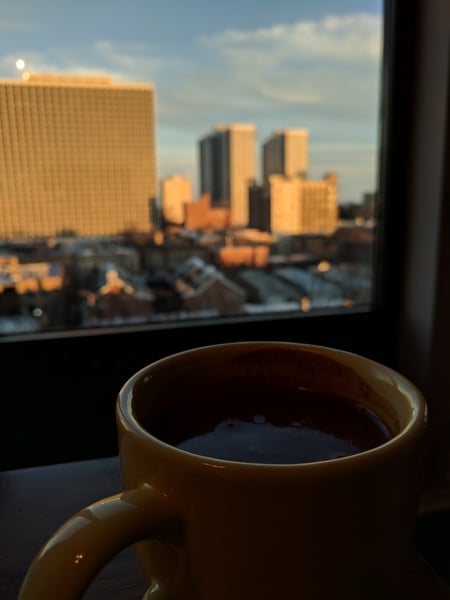
For more about the history of chocolate, download our free guide Chocolate Craze which is full of chocolate tips and recipes to help you fine tune your chocolate competency.


